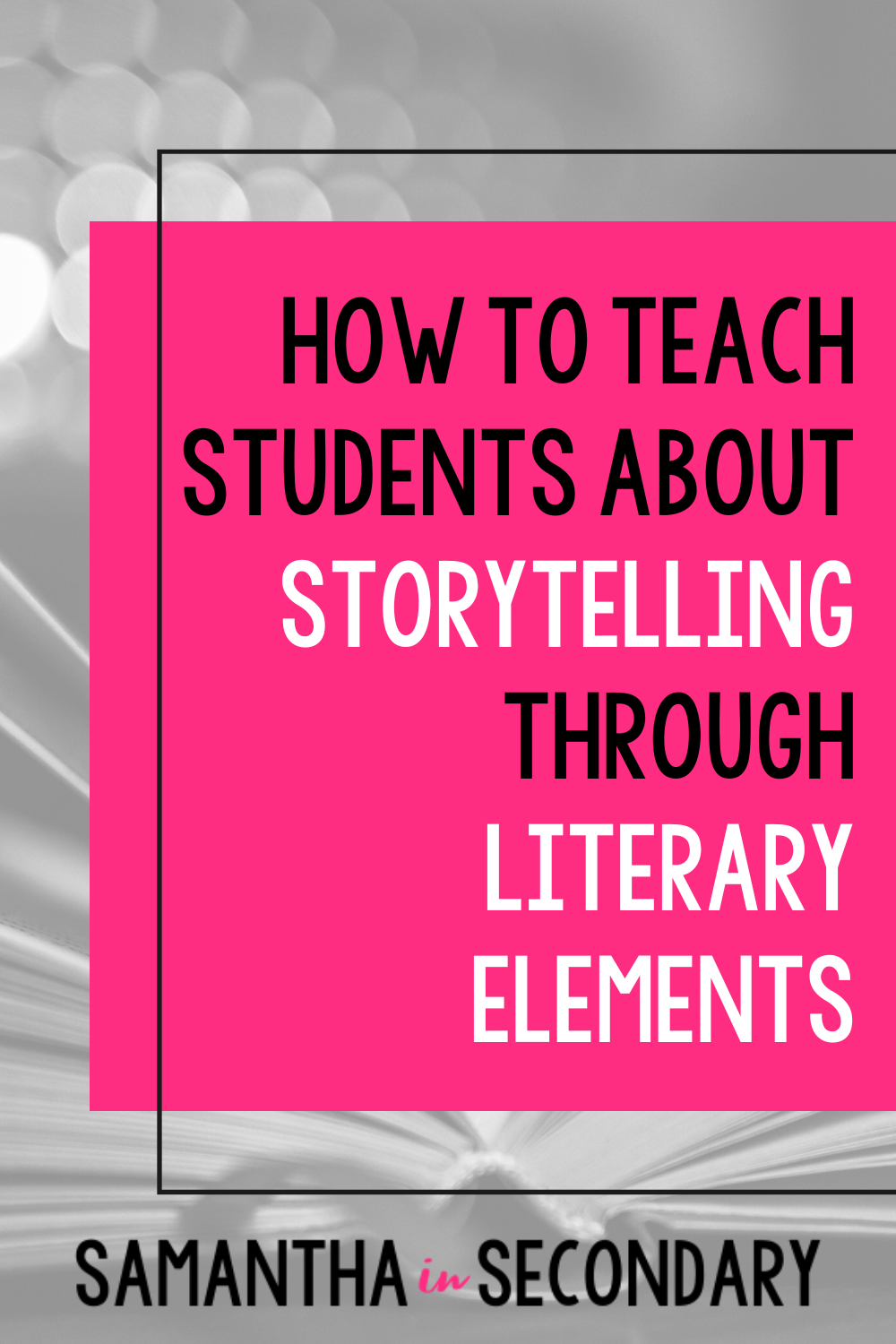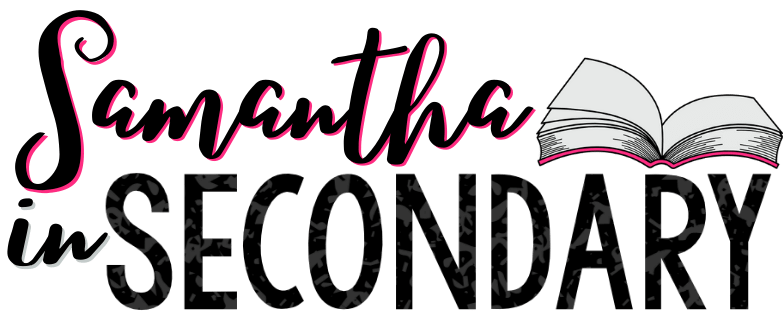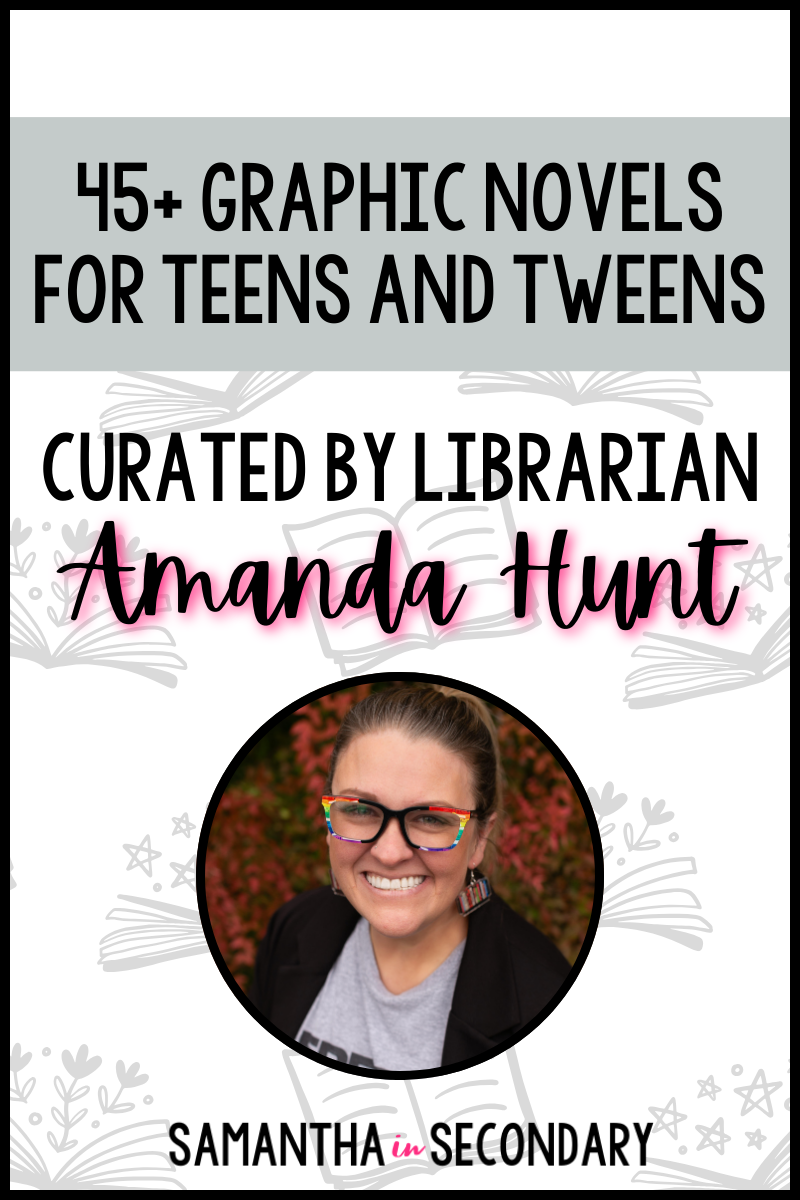The framework of storytelling rests in the literary elements. And while I know my students have covered the literary elements in elementary and middle school at various times, I think it’s important for students to look in-depth at how literary elements work together for more complex storytelling. This kind of explicit reteaching, in many cases, will serve as the foundation for everything you do in English class. I like to think of the literary elements as the “language” of ELA just as math and science have their own jargon. Discussing story elements gives us a way to communicate clearly with our students about stories in a way that will make them both better readers and writers.

Where to Start
I definitely never like to assume all of my students know what I’m talking about in a lesson, even if I think it’s something “basic” or a topic they should have learned already. I start with a simple presentation and notes that is very straightforward. There are not a lot of bells and whistles with this resource, but it keeps students engaged and ensures that everyone in my class is on a level playing field when it comes to understanding literary elements.
Where to Go Next
Next, I begin teaching my students each piece of the literary elements with more depth. That means mini units where we dive deeper into understanding that particular element and its function in storytelling. I want students to not only know that plot is a literary element. Or that pacing is a term for the test. I want students to take the same story and change the pacing to make it more suspenseful, or to scale back and turn a longer work into a shorter story. Students should understand different roles of characters because that helps them understand the storyline, make predictions, and improve their own character development.
Basically, if we dive deep it not only improves their reading skills with literary elements but also will boost their confidence when it comes to their own writing skills.
It Doesn’t End There
Now it’s time to scaffold. If you touch on a subject once and never refer back to it, your students will not retain the information. I frequently refer back to these building block lessons as a bellringer or quick writing assignment. I might have something set up for students to complete a review as an early finisher incentive, or save it for emergency sub plans.
In addition, I like to incorporate fun activities that we can use in-between longer units such as novel studies. Doodle notes is an example. We can have a quick sketchnote session that keeps them engaged and involved while identifying the literary elements. It works as a great review sheet for later in the year when they may not remember all of the stories we have read.
You can also help students remember with visual aids in your classroom. Decorate your class with something attractive and purposeful with something like this Literary Elements Poster Set. It’s print-and-go and having a visual goes a long way in helping students remember the terms.
Short stories are easy options for reviewing literary elements as well. If you find yourself in need of reviewing the literary elements, put together a short packet with a short story for your students. Your class might work together to identify literary elements or place the class in small groups. Short stories also make great sub plans. Click here to see some of my favorite short stories to use in your classroom.
Grab My Literary Elements Mini-Lesson Bundle
Looking for a done-for-you bundle of engaging mini-lessons on each literary element? Click here to view my bundle of resources. Here you’ll get 6 mini-lessons with presentations and CLOZE notes for direct instructions, plus activities to reinforce the learning for each element.

What emphasis do you place on teaching literary elements? Do your students need more help in not only understanding the terms, but utilizing them in their own writing? Sound off in the comments below or follow me on Instagram to find more!
Happy teaching!












